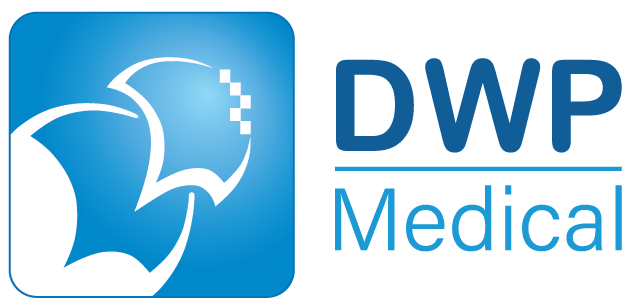Telehealth provides patients with convenient access to medical services while allowing healthcare providers to provide their services remotely.
In light of this increasing trend, the need for accurate billing practice has also increased. POS codes – particularly, POS 02 and 10 – are one of the important aspects of correct telehealth billing.
What is the meaning of POS 02 in medical billing, and how is it different from POS 10? And what impact do they have on your telehealth billing? Keep reading!
What is POS 02 in Medical Billing?
POS 02 description: “Telehealth Provided Other than in Patient’s Home.”
This code is used when a telehealth service is delivered to a patient who is not at home during the appointment. It is used in these conditions when the patient will be at:
- Hospital
- Skilled nursing facility
- School
- Office or workplace
- Community health center
- Clinic
Purpose of POS 02
The best reason for utilizing POS 02 is to remind the payers about the fact that the patient received the service in a non-residential setting. It helps in the calculation of payments.
Reimbursement for POS 02
Telehealth services that are billed with POS 02 are usually reimbursed at the facility rate, which is usually lower than the non-facility rate. The facility rate presumes the patient is in some kind of professional care environment, that overheads such as equipment or staff support are being covered elsewhere.
What is POS 10 in Medical Billing?
POS 10 stands for “Telehealth Provided in Patient’s Home.” This code is used when a patient receives telehealth services while remaining in their private residence or another home-like setting, such as:
- A personal home
- An apartment
- A temporary lodging
Purpose of POS 10
POS 10 in medical billing was introduced to provide more specificity in telehealth billing. Before its introduction, POS 02 was used for all telehealth services regardless of the patient’s location.
However, with the growing use of telehealth at home, the separate code has been assigned to better track and reimburse these services.
Reimbursement for POS 10
The services charged using the POS 10 are reimbursed at the non-facility rate, which is higher than the facility rate used when POS 02 is used in medical billing. This shows that, unlike in cases where patients are at home, the provider incurs more operational costs (technology, support and software); hence, he deserves higher reimbursement.
POS 02 vs. POS 10: Major Differences
This is the table of comparison to help you clearly see the differences between POS 02 description and POS 10 in medical billing:
| Telehealth Billing Code | POS 02 | POS 10 |
| Definition | Telehealth delivered to patients not at home | Telehealth delivered to patients at home |
| Locations | Clinics, hospitals, schools, nursing facilities | Residential homes, apartments, group homes |
| Reimbursement Rate | Facility rate (lower) | Non-facility rate (higher) |
Why Do These Codes Matter?
The use of these billing codes is not optional; in fact, it is important to use them in a correct way for accurate billing and receiving proper and quick payment.
Effects on Your Revenue:
The selection of a billing code affects the amount that a healthcare provider will receive. Since POS 10 pays more, using POS 02 by mistake can result in lost revenue.
Reduces Claim Denials:
Payers review POS codes closely. Incorrect usage of these codes will automatically cause claim denials, delays, or audits. By properly identifying the place of service, you increase the chances of clean claim submissions.
Improves Reporting and Data Accuracy:
Health authorities use POS codes to understand how telehealth services are being delivered. It helps in making accurate reports.
Don’t Forget the Modifiers:
Even though POS 02 and 10 clarify where the service took place, modifiers are still used to describe how the service was delivered. The most common telehealth modifiers include:
- Modifier 95 – Used to indicate real-time audio and video telehealth visits.
- Modifier 93 – Used for audio-only (telephone) service.
However, you should know that the modifiers do not affect reimbursement rates, but not using them can lead to incomplete claims and denials.
How to Use Billing Codes Correctly?
Using these billing codes is very important, and it is recommended to outsource your medical billing services to experts in DWP medical. The professional and skilled staff know exactly how to use these codes to get faster payments and speed up the process.
Below are a few practical tips to make sure you’re using these codes properly:
- Train your Staff: Make sure your administrative and billing staff know the difference between POS 02 and POS 10.
- Verify the Patient’s Location: Always ask and document where the patient is located during the session.
- Double Check Payer Guidelines: Each insurance company has different requirements and guidelines. So, make sure that you know all policies before submitting the claims.
To Wrap Up
Telehealth billing is not only code submission, it’s about the right code submission. Knowing the distinction between POS 02 and POS 10 makes correct reporting effective.
It also makes reimbursements faster and reduces headaches with the denials of claims. A quick recap:
- From the description of POS 02, it is referred to when the patient is in a hospital, clinic or any location outside the home.
- Specify value POS 10 when the patient is under care in their home.
However, if you use these codes properly, the whole medical billing system will keep working smoothly and you will get faster payments with reduced claim denial rates.


